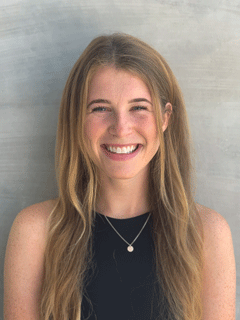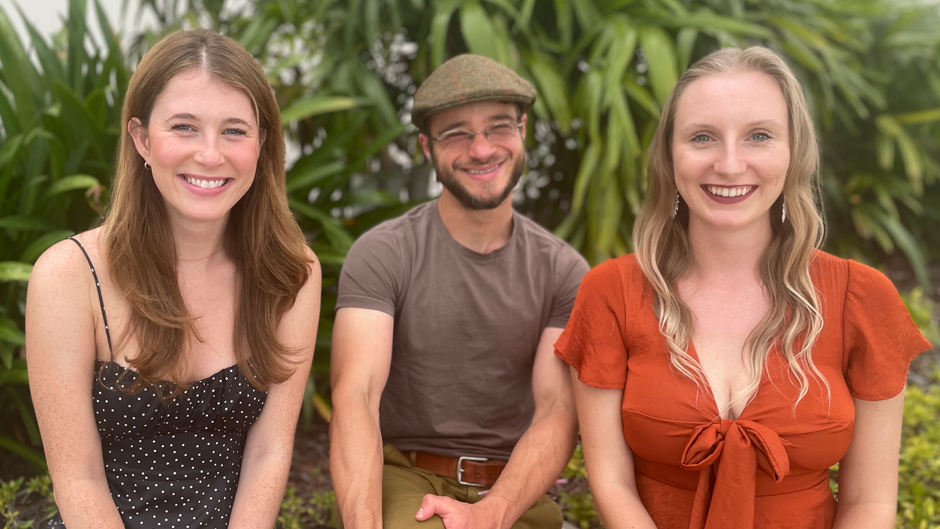Reid Rumelt fell in love with the birds of South America years before starting his graduate studies in biology at the University of Miami.
After college, Rumelt was a fellow at the Amazon Conservation Foundation, which allowed him to study birds in southeastern Peru, at the crux of the Tropical Andes and the Amazon Rainforest. Home to more than 800 different bird species, it is one of the most biodiverse areas in the world. It is also an ideal place to study how avian populations coexist and migrate because of warming temperatures.
And now, Rumelt is looking forward to spending more time in Peru starting this summer. He will explore the many species of birds in an area of Manu National Park where the elevation rises quickly from 600 feet to 11,000 feet. He will be recording bird calls using acoustic monitoring devices.
Then, Rumelt plans to use machine learning technology to identify and track the movement of different species. “This is a relatively tiny area, but because the mountain is there, and there are all these different temperatures and birds, it’s so fascinating for me,” he said.
Rumelt will be able to travel to Peru thanks to a National Science Foundation (NSF) Graduate Research Fellowship, which he and five other University of Miami graduate students received this spring. Rumelt will study how avian populations are migrating, and how different species communicate in such a densely populated region.
He said that he is extremely grateful for the funding and feels he now has more flexibility to split his time between Miami and the Amazon region. “This fellowship will give me the freedom to do my research work for the rest of the time I am in graduate school,” he said.
Rumelt is among the largest group of graduate students to receive these competitive grants, said Tiffany Plantan, executive director of the Graduate School. The NSF Graduate Research Fellowships Program recognizes and supports graduate students in the fields of science, technology, engineering, and mathematics who are pursuing research-based master’s and doctoral degrees. In addition to a three-year annual stipend, the student’s institution receives a grant as well. Fellows also gain access to an immense collection of professional development opportunities over the course of their graduate career.
“These awards are based on the intellectual merit and broader impacts of the research,” said Plantan. “This speaks to the caliber of our students and their potential as high achieving scientists and engineers. We are so proud that these students will be implementing their research ideas at our institution.”
Here’s a closer look into the five other University student recipients and their research:
Lang Duong, incoming doctoral student in clinical psychology
 Awareness of one’s own cultural beliefs and values and how these can differ from other cultures—also known as cultural competency—is heralded as a critical way to reduce disparities in health care, employment, and education. Yet while it is known to offer many benefits, too often cultural competency initiatives do not transfer beyond conversations. To bridge the gap, Duong aims to create the first brief scale to assess a person’s individual’s cultural needs that will be feasible and acceptable to use in a variety of settings. Measuring and reviewing an individual’s cultural needs will allow providers, educators, and supervisors to accommodate them because different people require different types and degrees of culturally competent responses.
Awareness of one’s own cultural beliefs and values and how these can differ from other cultures—also known as cultural competency—is heralded as a critical way to reduce disparities in health care, employment, and education. Yet while it is known to offer many benefits, too often cultural competency initiatives do not transfer beyond conversations. To bridge the gap, Duong aims to create the first brief scale to assess a person’s individual’s cultural needs that will be feasible and acceptable to use in a variety of settings. Measuring and reviewing an individual’s cultural needs will allow providers, educators, and supervisors to accommodate them because different people require different types and degrees of culturally competent responses.
Patrick Kiel, doctoral candidate in marine biology and ecology
At a time when corals are facing existential threats with warming oceans, many scientists are working to understand the unique physiology of these marine invertebrates to save them. Kiel has learned that a coral’s shape and the cilia that line the coral tissue create unique fluid flows at the coral-seawater interface. This develops a microenvironment separate from the seawater that flows above the coral, and this thin layer of water acts as a boundary between the coral and bulk water. This water can be modified naturally by the coral's metabolism, or artificially through eco-engineering practices. Kiel’s project seeks to investigate whether these boundary layers can safeguard corals from ocean acidification and hopes to find ways for eco-engineers to leverage naturally occurring phenomena to preserve coral reefs.
Lauren Milgram, second-year doctoral candidate in clinical psychology
 Strong emotions, such as fear, anger, shame, and disgust help adolescents communicate and are a key part of how they express themselves. Milgram hopes to examine how minors respond to the strong emotions of fear and disgust. She will use this research to better understand the nature and treatment of internalizing disorders—like anxiety, depression, and obsessive-compulsive disorders in youth and adults. Then, Milgram aims to conduct a study with youth and young adults in the University community and use this research to inform novel strategies that could improve some existing treatments for anxiety and related disorders.
Strong emotions, such as fear, anger, shame, and disgust help adolescents communicate and are a key part of how they express themselves. Milgram hopes to examine how minors respond to the strong emotions of fear and disgust. She will use this research to better understand the nature and treatment of internalizing disorders—like anxiety, depression, and obsessive-compulsive disorders in youth and adults. Then, Milgram aims to conduct a study with youth and young adults in the University community and use this research to inform novel strategies that could improve some existing treatments for anxiety and related disorders.
Alexandra Stiffler, doctoral candidate in biology
Sargassum seaweed provides critical habitats on the ocean’s surface for many marine organisms, ranging from turtles and fish to microscopic organisms. Even though sargassum blooms are an expanding issue, we know next to nothing about the microbial interactions within sargassum. Stiffler’s research aims to unravel the complex interaction between sargassum and its microbial partners, which will significantly impact our knowledge of sargassum’s growth, productivity, and ability to capture atmospheric carbon.
Bailey Wallace, doctoral candidate in biology
 Corals live in association with a suite of microorganisms—including bacteria, viruses, and other organisms—called the holobiont, which fluctuates with the environment and influence coral health and resilience. However, little is known about the viral component of this holobiont. Wallace studies the genes encoded by these viruses in coral and how their interactions with bacterial members of the holobiont may influence coral health and disease. At a time when Stony Coral Tissue Loss Disease (STCL) is decimating many corals without a clear explanation, Wallace hopes to discover whether there is a viral role in STCL.
Corals live in association with a suite of microorganisms—including bacteria, viruses, and other organisms—called the holobiont, which fluctuates with the environment and influence coral health and resilience. However, little is known about the viral component of this holobiont. Wallace studies the genes encoded by these viruses in coral and how their interactions with bacterial members of the holobiont may influence coral health and disease. At a time when Stony Coral Tissue Loss Disease (STCL) is decimating many corals without a clear explanation, Wallace hopes to discover whether there is a viral role in STCL.

